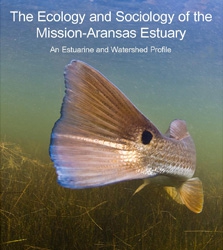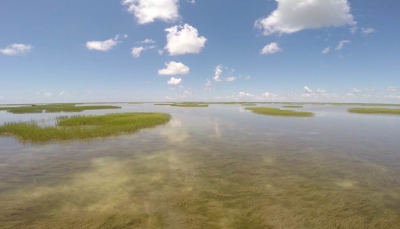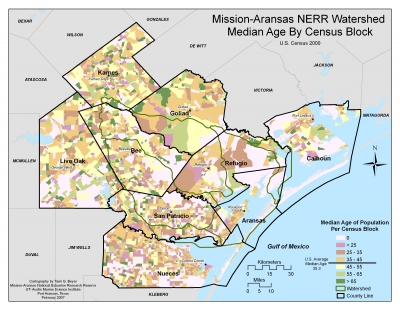The Mission-Aransas Reserve stewardship program strives to provide information and tools for managers that will promote careful and responsible management of natural resources. The information and tools available ranges from maps of Reserve habitats to characterizations of the watershed and can be used for a variety of different purposes, such as ecosystem-based management, conservation planning, and research design.
Site Profile
The Mission-Aransas Estuary is a diverse and complex system with a variety of different habitats that support commercially and recreationally important fish and shellfish species, as well as several endangered and threatened species. The Ecology and Sociology of the Mission-Aransas Estuary: An Estuarine and Watershed Profile provides researchers and resource managers with basic information about the different physical ecosystem components, ecological processes, habitats, and watershed characteristics of the Mission-Aransas Estuary. This basic information is extremely helpful for learning about issues of concern, designing applied management investigations, and developing future scientific studies. PDF
Habitat Mapping
Maps provide valuable information for resource managers, researchers, policy makers, and educators. They can be used in a variety of ways, from conservation planning to experimental design. The Mission-Aransas Reserve produces habitat maps for the Mission-Aransas Estuary and the surrounding watershed. The maps are developed using protocols and a classification scheme that have been standardized across the Reserve System. These maps provide a baseline for monitoring habitat change over time and understanding potential impacts to the populations and species that rely on coastal habitats.
Reserve maps are available in the Resource Library, while data files for the Reserve boundary, watershed boundary, and watershed land use/land cover are available on the Centralized Data Management Office website.
Characterization of the Reserve Watershed
The human dimensions of our environment greatly influence our ability to manage resources effectively. Human dimensions include the social, cultural, economic, and political aspects of our surrounding environment. Changes to these aspects influence human perception and behaviors, which in turn affect resource management decisions. The Mission-Aransas Reserve partnered with the NOAA Coastal Services Center to examine the human dimensions of the Reserve watershed and to understand how human perceptions and behaviors are linked to resource flow and water quality. The Community Characterization of the Mission-Aransas National Estuarine Research Reserve and Surrounding Area provides local resource managers with the information they need to use an ecosystem-based management approach that considers both humans and the environment.
|
|

A site profile was created to provide managers with essential information about the Mission-Aransas Reserve.

The Mission-Aransas Reserve contains a variety of wetland, terrestrial, and marine habitats.

Social characteristics, such as average age, can influence perception about the environment. |
|